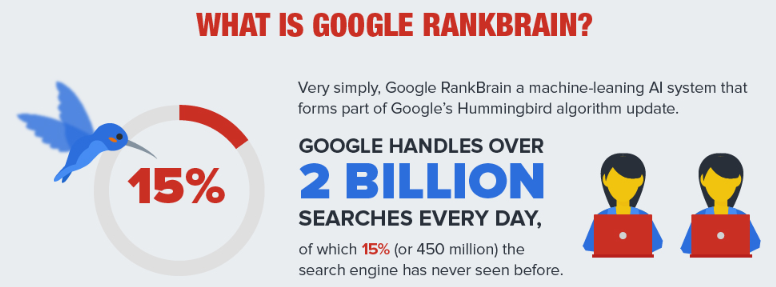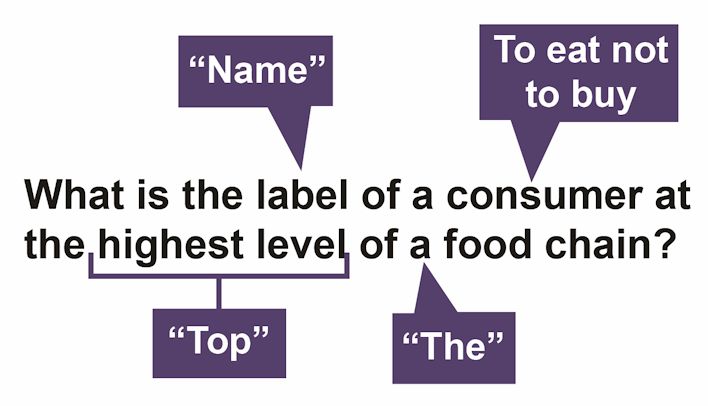The exact way Google ranks websites has long been an enigma. Only two years ago did we get confirmation about the two most important ranking signals (hint: content and backlinks). However, you might not know that the third most important is relatively new: Google RankBrain.
RankBrain is a machine learning algorithm that the search giant uses to improve its search results. It’s one of many web initiatives of artificial intelligence that will change our lives.
Since RankBrain is such an important factor for deciding where your site will end up in the SERPs, you better not ignore it. Yet, chances are good you know almost nothing about it. Time to change that.
In the following, we will dive deep into Google RankBrain. We will talk about what it is, how it works and how to do Google RankBrain SEO to make sure your WordPress website performs well.
What is Google RankBrain and How Does it Work?
As already mentioned in the introduction, RankBrain is a machine learning algorithm. It helps Google process search results and understand user queries. The AI then uses this information to improve the Google search algorithm and with that the search results for users.
Google Search Pre-RankBrain
Before RankBrain, Google’s search algorithm was entirely coded by humans. They would come up with theories about how to improve the search results, run a test and, if the results were positive, implement the changes in the algorithm.
However, something they couldn’t account for was search queries Google had never seen before. In fact, back in the day, the search engine encountered almost 500 million search queries a day that it could not process properly.

As a consequence, search results for these queries were often dissatisfactory. Therefore, Google needed a system that could understand the search intent even for phrases that had never been typed into its search bar before.
Enter RankBrain
Today a lot of this work is taken over by Google RankBrain. To do so, it does three main things:
- Analyze search queries to figure out what results users are looking for
- Measure user satisfaction with the results that were delivered for their query
- Use the feedback to further improve Google’s search algorithm
For the first part, RankBrain picks apart each query to understand better what the user is looking for.

After that, the AI tries to connect that knowledge to popular searches and concepts from related keywords. From here, it tries to infer what you are looking for and provides search results accordingly.
However, RankBrain’s work doesn’t stop there. It will also check whether the results you received are satisfactory by measuring your interaction with them.
That means the AI will measure click-through rate, whether you rephrase your search query, dwell time, bounce rate and if you come back to the results page to look for other options (so-called pogo sticking).
From here, it will take the results with low user satisfaction and come up with a hypothesis on how to improve the situation in the future. If the results are positive, it will also change the algorithm accordingly, all by itself.
Does Google RankBrain Work?
Is the AI doing a good job? So far, it seems like it. After all, Google promoted it from merely processing parts of the unknown key phrases to using it for all search queries.
And why wouldn’t they? After all, RankBrain appears to be doing a better job at improving search results than the Google engineers themselves. In fact, when it was pitted against a number of engineers to find the best page for a search query, the AI outperformed the humans by 10 percent.
Quite impressive, isn’t it?
The cool thing about RankBrain is that, in contrast to global changes to the search algorithm, it can improve search results on a per-keyword basis. This makes the SERPs more precise than before and allows for more granular improvements.
Also, ironically, even though RankBrain is a machine learning algorithm, it actually increases the influence of human users on search results. That’s because the AI can use direct feedback from how users interact with your content to judge its quality. For that reason, you need to focus less on pleasing the machines (read algorithm) and more on actually swaying people to click on your stuff.
How do you do that? That’s what we will talk about in the second half of this post.
How to Use RankBrain to Your Advantage
Ok, now that we’ve settled on what Google RankBrain is and how it works, it’s time to figure out what it means for your WordPress site. So, what follows is a crash course in Google RankBrain SEO.
Create Truly Helpful Content
By now, I shouldn’t have to tell you that content is the most important element of your website. As stated earlier, it is the one of the top-two ranking factors for Google and thus a central pillar for website success.
It’s also what human visitors will judge your site in their search results by, which RankBrain will notice. So, the AI is another reason to make your content as helpful as possible.
However, this topic has been covered so much, we won’t go over it again here. Instead, I will just point you to these very helpful articles here on Torque:
- Produce Better Content with these Content Creation Tools for WordPress
- 15 Tools and Plugins to Create Better Content with WordPress
- How to Create a Content Strategy for Your WordPress Website or Blog
- What is the Optimal Content Length? Here’s What the Science Says
- Want A Boost In Organic Traffic? Optimize and Relaunch Your Old Content
This is more than enough material to help you create kick-ass content that will help you rank well.
Rethink Keyword Research
We have talked about keyword research on this site before. It continues to be a central element of SEO. However, with Google RankBrain out and about, you need to focus even more on search intent.
For one that means, putting yourself in the shoes of your potential visitors. Where are they in their buyers’ journey?

Are they looking for additional information? Would they take out their wallet and buy immediately? Your page content should reflect the needs of the visitors.
A good way to find out more about user intent is the related search terms at the bottom of the SERPs. These are phrases that people who are looking for your keyword have also typed into Google.

In practical terms, concentrating on user intent will also mean switching from long-tail to medium keywords as focus keywords. Since RankBrain is much better at figuring out synonyms for the same search query, it doesn’t make sense to try and rank for all variations.
Instead, go for shorter keywords as your main keyword. When you create a valuable page around it, RankBrain will also send you visitors that are looking for related keywords.
However, that doesn’t mean that you shouldn’t incorporate long-tail keywords in your content (especially as LSI keywords, see below). Just don’t use them as your main phrase.
Focus on Organic CTR
I mentioned on top that RankBrain cares about user interaction. Click-through rate is a sign of that. In fact, Larry Kim claims that organic CTR will be the most important quality marker when RankBrain takes over even more responsibility.
Learning how to increase your CTR should, therefore, be part of your efforts for Google RankBrain SEO. We have recently published an article on that very topic. Here are the cliff notes:
- Measure first — Only what gets measured gets managed. Create a clear “before” picture of your site’s CTR so you can understand if your efforts are making a difference.
- Focus on your headlines — Work on the most prominent part of your appearance in the search results. Try out many different headlines, infuse them with emotions (especially in combination with keywords), use numbers and proper formatting. Also, check our copywriting tips.
- Test titles — Testing is better than guessing. Use tools, social media, ads, and plugins to find the most effective headlines.
- Use descriptive URLs — Because nobody wants to click on a link called http://yoursite.com/?p=123
- Create custom meta descriptions — Let readers know that to expect from your content. Meta descriptions also give you an opportunity to include a call to action, use power words and emotions.
- Implement rich snippets — Structured data allows you to provide a lot more information to your potential visitors right in the SERPs.
- Concentrate on site speed — Slow websites are a death stroke to CTR. Do something about it.
Improve Dwell Time, Bounce Rate and Conversion Rate
Dwell time is how long visitors stay on the page they landed on. Bounce rate is the number of people who leave your site without clicking on anything else. Conversion rate describes those people who complete whatever task you want them to accomplish on your site.
Google probably knows all of the above and judges your site by it. To improve them:
- Optimize the first impression — Again, speed is of the essence. Aside from that, make sure your site design and layout deliver what your users need right away. Focus on mobile friendliness and be careful with ads and popups.
- Make user needs a priority — Understand what visitors want and produce super useful content around it. In addition to that, invest in readability and content structure, keep your pages up to date and respond to any questions or comments.
- Link internally — Linking helps users discover more of your site. Refer to other posts and provide lists of best, latest and/or related articles.
- Do A/B testing — Split testing is a great way to improve your conversion rates. Small changes can make a huge difference. Be it calls to action, page design and layout, or headlines – always be testing. WordPress also has tools to do so.
- Provide social proof — Humans are herd animals. If you can show that others approve of you, you are more likely to get more people to do the same. There are many possibilities to include social proof, we have a whole article on that.
If you need more information, we also have detailed posts on dwell time and conversions rates.
Use LSI Keywords
LSI stands for Latent Semantic Indexing. In simple terms, it means that Google is using keywords related to your main topic to further understand what your post is about.
Why does that matter?
As mentioned, Google RankBrain SEO is all about user intent and context. Related keywords make it easier for Google’s AI to figure exactly that out about your content. By including them, you support your original topic and, at the same time, make it more likely to rank for those phrases as well.
To find LSI keywords, either build a mind map or use this tool. Aside from that, if you use natural language (meaning writing the way you talk), you will automatically use variations of your keywords.
Google RankBrain SEO in a Nutshell
The Google RankBrain AI is an important part of how the search engine ranks pages. It helps them better understand their users and provide improve the search results. RankBrain will also likely grow in importance, especially with voice search on the rise.
Above we have given you a number of tips on how to do proper Google RankBrain SEO. Let’s summarize them once again:
- Continue to create helpful content aimed at satisfying user intent
- Shift towards using shorter keywords as main key phrases and build comprehensive information around them
- Take efforts to improve your organic click-through rate
- Pay attention to dwell time, bounce rate and conversion rate
- Use related keywords in your content
In short, further concentrate on helping human beings instead of trying to game machines and algorithms. In the future, your content will increasingly be judged by how people like it, not search spiders.
Do you have additional tips on how to do SEO for Google RankBrain? Let us know in the comments section below!
The post Google RankBrain SEO – How to Use Google’s AI to Your Advantage appeared first on Torque.
